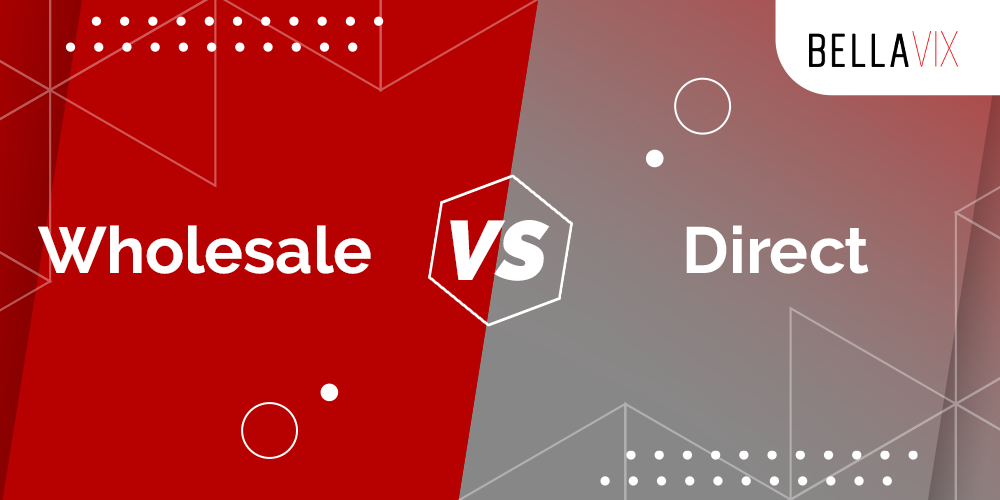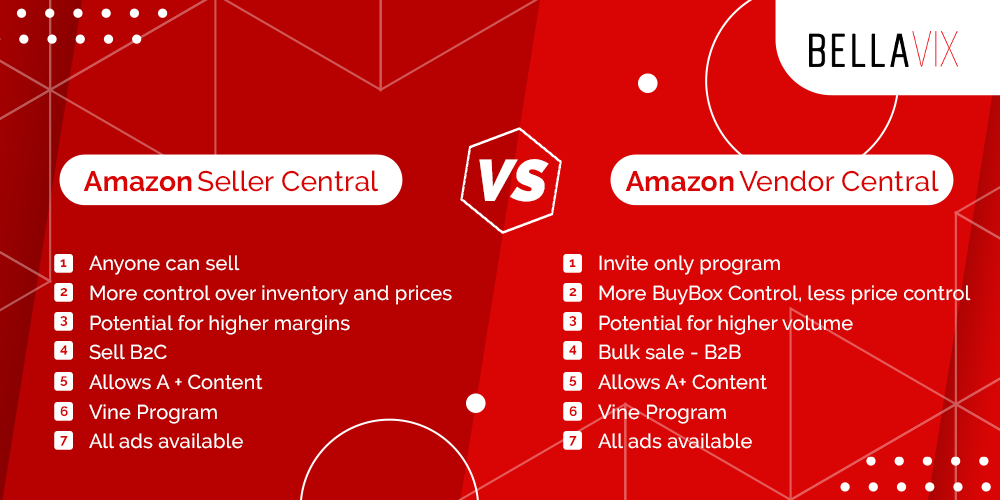
What’s the difference between Seller and Vendor in the Amazon universe? This is a common question when figuring out where to start on the Amazon marketplace.
Here’s all the information you need to help you understand the differences between the two business models.
Let’s start with addressing the elephant in the room.
Sellers are like you and me, or any company that wants to sell their products on Amazon. The base step you have to go through if you’re selling on Amazon is to create a seller account. After this, launch your product and you have the potential to sell to 2.45 billion monthly buyers around the world.
Vendors can’t choose to be Vendors from the beginning. It is an Amazon invite-only system that only occurs for a Seller after a few completed milestones.
Vendors must be verified Amazon Sellers that own a registered brand and have a good selling history. Only if these conditions apply might you be contacted by Amazon to become a Vendor. A Vendor will no longer sell directly to Amazon buyers but will instead sell products in bulk to Amazon, and Amazon will manage customer support for that specific listing.
Another question that we see a lot is, “Which model is better for my business?”
Now that you know the fundamental difference between the two business models, you need to be aware of the pros and cons of each of the selling models. Let’s go through them step by step.
- Stock and negotiation
As a Seller, you can’t negotiate with Amazon. You have a fixed commission and a fixed FBA tax depending on the weight and size of the product. The warehouse space is calculated with the Inventory Performance Index. You need good sales values, little excess inventory, and low out-of-stock (OOS) rates for a good index.
As a Vendor, you negotiate your contract with Amazon once per year and are dependent on Amazon and your negotiating skills. Using a Vendor account will probably be a low-income branch but will help you sell high volumes and keep control of the Buy Box for longer. But be aware that although Amazon manages the stock, you continue to manage and pay for the advertising.

- Fulfillment
For Vendors, fulfillment is pretty straightforward. Amazon researches and makes predictions over selling volume, then makes regular orders from the brand, which must be shipped to Amazon fulfillment centers. These purchases ensure the brand benefits from good planning and scalability.
For Sellers, the forecast is their responsibility, and the size of the available storage space is directly linked to sales performance. The recommendation is that Sellers should restock every 90 days with as many items as they are sure to sell.
- Prices
The Vendor model doesn’t allow a say on the pricing for the product other than specifying an MSRP. Due to Amazon’s price algorithms and competition, prices may go down even more than on the manufacturer’s website. The only good thing would be that the Vendor almost always wins the Buy Box.
As a Seller, Amazon states a maximum and minimum price recommendation. If a brand does not comply with these, Amazon kicks them out of the Buy Box or suspends their product.
- Content
For a Vendor, content is a bit more regulated. In the past, only Vendors had access to A+ content, but today both Sellers and Vendors have access to A+ content (if a Seller has registered a brand in Amazon’s Brand Registry).
- Reviews
Reviews are a significant part of the Amazon shopping experience. When launching a new product, the retail readiness blueprint teaches us that we must have at least 15 reviews. To get those reviews quicker, we have access to Amazon Vine. At first, Amazon Vine was only available to Vendors, but for the past two years, it has also been available to Sellers.
- Advertising
A few years ago, Vendors had a lot of advantages over Sellers, and Vendors had access to more advertising formats and settings. Nowadays, you can use the full potential of Amazon advertising on both platforms.
- Business data
Vendors were given little data up until 2020, and this was one of the most significant advantages for Sellers over Vendors. To find out more metrics and data, you had to subscribe to the premium program ARA (Amazon Retail Analytics).
ARA was removed in early 2020, and then Brand Analytics was introduced and made available free of charge. Historical performance and conversion rates were made available to Vendors at the end of 2020 for more transparency.
After analyzing this information, we can say that the two models have changed quite a lot over the past few years. Sellers can use Sponsored Display Ads and can participate in Amazon Vine, and Vendors can use Brand Analytics and have access to free data and KPIs. Both models offer the same tools for researching, using historical data, and advertising across the Amazon platform and its partners. But the essential difference is that one model is used for B2C and the other for B2B.
As a Seller, you should be able to monitor and modify your product prices and keep very good control over logistics and contact with the end customer.
As a Vendor, you need to have good negotiating skills and an excellent and competitive product that Amazon wants to sell.
We hope that you enjoyed the content of this article. If you’d like to find out more, don’t hesitate to get in touch with the BellaVix team.
Keep up with the latest Amazon and Walmart news updates and subscribe to our BellaVix newsletter 👇👇👇

